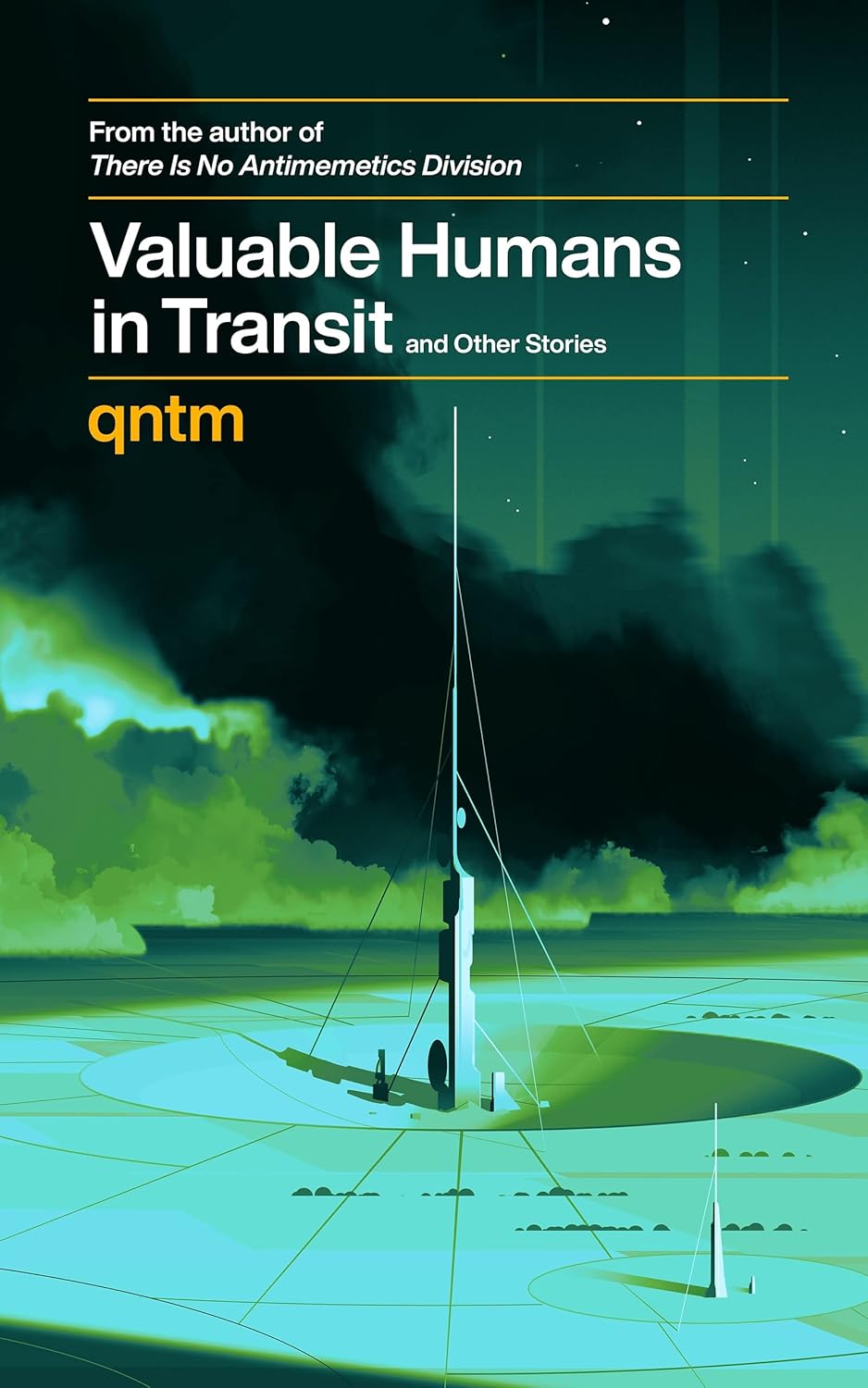Valuable Humans in Transit and Other Stories

Review
Valuable Humans in Transit and Other Stories is a collection of short stories by .
Lena
Lena is my favorite short story from the past decade. It tells the story of MMAcevedo, the first executable human brain image, written as a Wikipedia article. The format is perfect: the dry, encyclopedic, just-the-facts style contrasts sharply with the horrifying world being described, where sentient human minds are run on banks of computers to perform menial tasks.
The title, Lena, references model Lena Forsén whose picture is commonly used as a test image without her permission, mirroring how MMAcevedo is used without Miguel Álvarez Acevedo’s consent.
Reading Lena again while reading the Bobiverse series is interesting, as this short story shows the potential horrors of brain emulation, while We Are Legion (We Are Bob) presents it in a positive light.
If You Are Reading This
If You Are Reading This is about a speed runner who meets his scientific idol, only to hear about the scientist’s encounter with an alien signal from a dying race. This story feels targeted directly at me—even mentioning Dark Energy and Higgs research as cutting-edge scientific work—but it falls flat. The ideas didn’t feel exciting or novel.
The Frame-by-Frame
This story follows a self-driving car discovering a man on the road ahead, told as a conversation between the vehicle’s different systems. The machine must decide whether to clip the person or stop immediately. It accelerates when it realizes the man is the car’s former lead programmer who left for a competing company.
The Difference
The Difference is an IRC chat between a person (or bot) and other users. The main character claims to be an imprisoned human forced to chat with people who think he is a bot. As the story progresses, we realize it’s impossible to determine the truth.
George
George follows a human spaceship that discovers a planet covered in grey goo. The crew theorizes that the civilization used it to commit suicide, but they unwittingly unleash the goo upon the universe by giving it access to space travel.
cripes does anybody remember Google People
cripes does anybody remember Google People was originally composed on Twitter, taking the form of a series of tweets. The author and others reminisce about a fictional social network, Google People, and its strange AI or paranormal behavior.
Driver
A follow-up to Lena, Driver is another Wikipedia article, this time about a brain scan used as a slave driver for other brain images. It expands on the world introduced in Lena and hints at a mysterious ele.
I Don’t Know, Timmy, Being God Is a Big Responsibility
I had read a draft of I Don’t Know, Timmy, Being God Is a Big Responsibility before but didn’t remember it was by , so this story gave me a sense of déjà vu. It’s about researchers who build an infinitely powerful computer and use it to perfectly simulate Earth, only to realize they must also be living in a simulation. The concept is engaging, and the story does a great job of gradually revealing this twist.
A Powerful Culture
This story offers a take on the infamous “We considered ourselves to be a powerful culture. This place is not a place of honor…“ warning message about nuclear waste storage. It imagines a scenario where Earth-1 has deadly waste to dispose of, how they might dump it on other multiverse Earths, and how those Earths would respond. It reminds me of Cleaning Up from ’s The State of the Art.
Valuable Humans in Transit
Valuable Humans in Transit is about an AI that controls all nanotechnology on Earth. When an extinction-level asteroid hits, it decides to forcibly digitize all humans and transmit them off-world. I particularly enjoyed the ending, where the AI must emulate some of the physicists it digitized to invent faster-than-light travel in order to build a receiver for the signal. In a way, it is a mirror of If You Are Reading This.